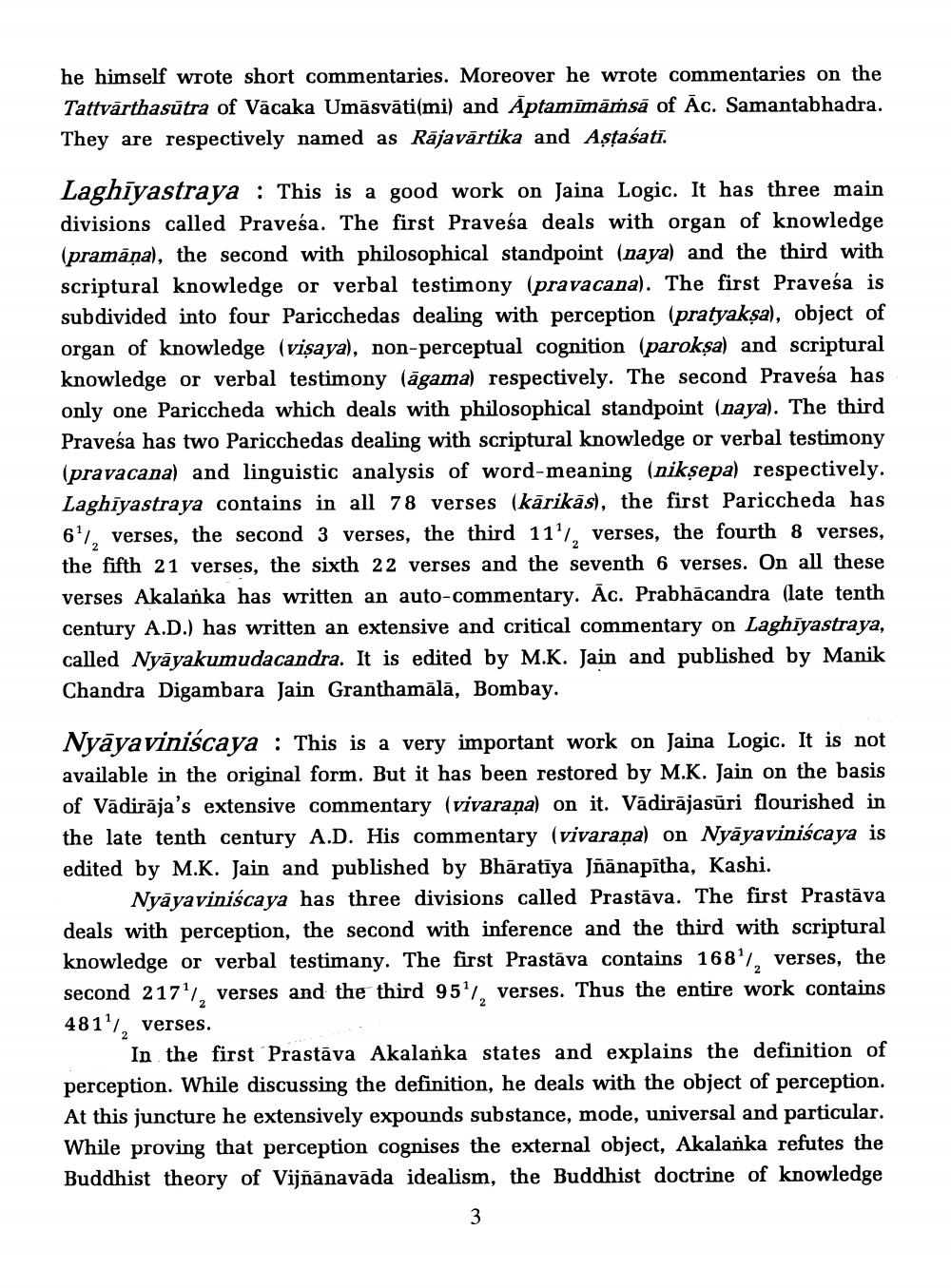________________
he himself wrote short commentaries. Moreover he wrote commentaries on the Tattvārthasūtra of Vācaka Umāsvāti(mi) and Aptamīmāṁsā of Āc. Samantabhadra. They are respectively named as Rājavārtika and Aștaśati.
straya : This is a good work on Jaina Logic. It has three main divisions called Praveśa. The first Pravesa deals with organ of knowledge (pramāna), the second with philosophical standpoint (naya) and the third with scriptural knowledge or verbal testimony (pravacana). The first Pravesa is subdivided into four Paricchedas dealing with perception (pratyakşa), object of organ of knowledge (visaya), non-perceptual cognition (paroksa) and scriptural knowledge or verbal testimony (āgama) respectively. The second Praveśa has only one Pariccheda which deals with philosophical standpoint (naya). The third Pravesa has two Paricchedas dealing with scriptural knowledge or verbal testimony (pravacana) and linguistic analysis of word-meaning (niksepa) respectively. Laghīyastraya contains in all 78 verses (kārikās), the first Pariccheda has 6'), verses, the second 3 verses, the third 11°, verses, the fourth 8 verses, the fifth 21 verses, the sixth 22 verses and the seventh 6 verses. On all these verses Akalanka has written an auto-commentary. Ac. Prabhācandra (late tenth century A.D.) has written an extensive and critical commentary on Laghiyastraya, called Nyāyakumudacandra. It is edited by M.K. Jain and published by Manik Chandra Digambara Jain Granthamālā, Bombay.
Nyāyaviniscaya : This is a very important work on Jaina Logic. It is not available in the original form. But it has been restored by M.K. Jain on the basis of Vădirāja's extensive commentary (vivarana) on it. Vădirājasūri flourished in the late tenth century A.D. His commentary (vivarana) on Nyāyaviniscaya is edited by M.K. Jain and published by Bhāratīya Jñānapītha, Kashi.
Nyāyaviniscaya has three divisions called Prastāva. The first Prastāva deals with perception, the second with inference and the third with scriptural knowledge or verbal testimany. The first Prastāva contains 168'/, verses, the second 217'/, verses and the third 95', verses. Thus the entire work contains 481'/, verses.
In the first Prastāva Akalanka states and explains the definition of perception. While discussing the definition, he deals with the object of perception. At this juncture he extensively expounds substance, mode, universal and particular. While proving that perception cognises the external object, Akalanka refutes the Buddhist theory of Vijñānavāda idealism, the Buddhist doctrine of knowledge




